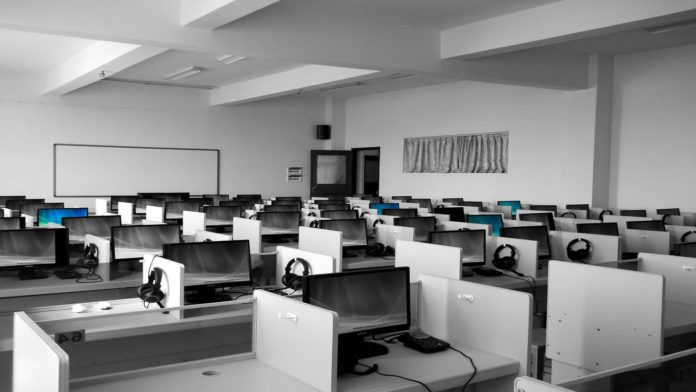In the midst of the COVID-19 pandemic, workplaces across Canada closed their doors and began transitioning to remote work arrangements. Even now, with most pandemic restrictions lifted, many employees continue to work in both hybrid and fully remote capacities.
While you might think that fewer in-person employees would mean less energy consumption for large office buildings, a new study has found that this isn’t necessarily the case. Most office buildings are designed with human interactions in mind, and when fewer people are present, these buildings aren’t as energy efficient.
The study was led by researchers from Carleton University‘s Human-Building Interaction Lab and published in Building Simulation.
Typical office buildings assume that people are present
Human beings generate heat, and architects take this into account when designing office buildings. They do this by estimating the number of people that will be present at different times of the day, and optimizing the buildings’ heating, ventilation, and other systems for these estimates.
During the pandemic, however, most office buildings’ occupancies were drastically reduced. Even now, many employees are only in the office on a part-time basis. This means that traditional estimates of building occupancy levels are no longer correct.
To learn more about the environmental impacts of this switch to remote or hybrid work, the team behind the study simulated a typical three-story office building under five different occupancy levels. This included 0% occupancy (which may have been the case during the height of the pandemic) and 100% occupancy (which was close to the case pre-pandemic).
They also included scenarios with 50% occupancy, where the employees were either distributed uniformly across the building, or consolidated in the core or around the perimeter of the building.
The researchers then simulated how different smart technologies could help in each of these scenarios. Their simulations included lighting sensors, smart plugs that could be used to remotely control electrical devices, and ventilation and thermostat systems that could adapt to different building occupancies.
Smart technologies can help
The researchers found that at partial occupancy, buildings had to expend more energy for heating. This was because fewer people were present in the office to generate body heat, and the building’s heating system had to work more to make up for it.
The team also found that smart technologies were able to help buildings become more energy efficient in these partial occupancy scenarios. What’s more, different technologies were more effective depending on how employees were distributed throughout the building.
For example, smart lighting sensors were most effective when employees were consolidated in one core region, rather than spread throughout the building. This was also the case for smart thermostats, which were most effective when employees were consolidated in one region and least effective when employees were spread uniformly throughout the building.
The researchers stress that building managers should consider many different factors when optimizing energy use in their buildings. During partial occupancy, this could mean asking employees to work together in one area of the building. This could also mean prioritizing smart technologies which are likely to have the biggest impact for their buildings.
In the future, building designers can also consider introducing energy-saving measures from the start. For example, the University of British Columbia‘s new Evolve building was designed to produce 90% less energy than a typical building of the same size.
Overall, the researchers believe that choices about energy efficiency should be made on a case-by-case basis in order to best meet each workplaces’ needs.
“Individually assessing each building to gauge the performance of different technology and strategies can help sustain buildings in the absence of human interactions,” said Farzam Kharvari, a PhD candidate and first author of the study, in an article for The Conversation Canada.
“This in turn will help reduce emissions and strengthen our fights against climate change.”








































